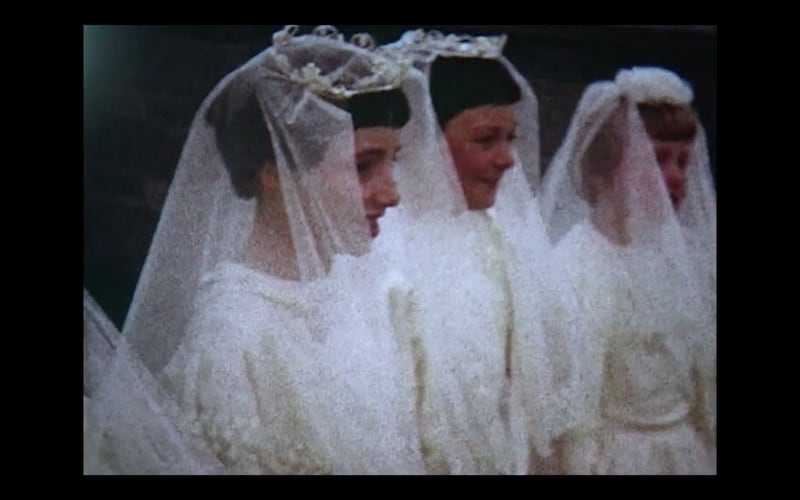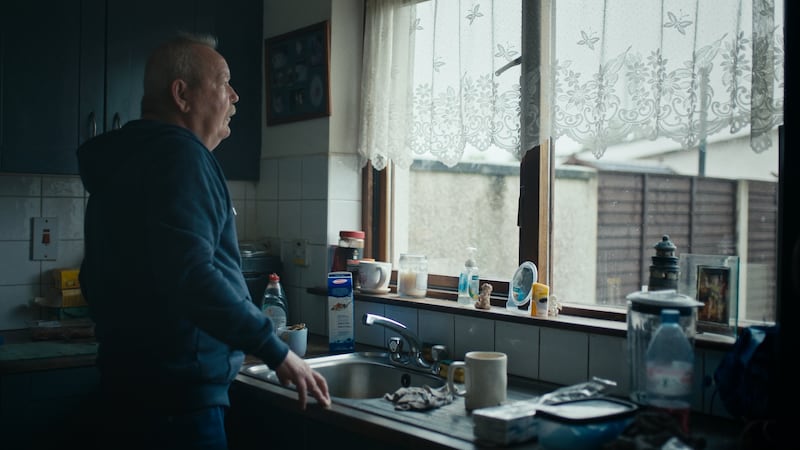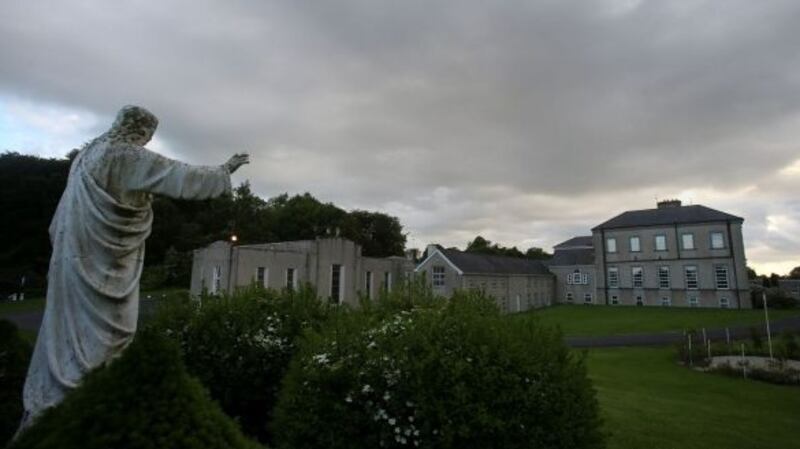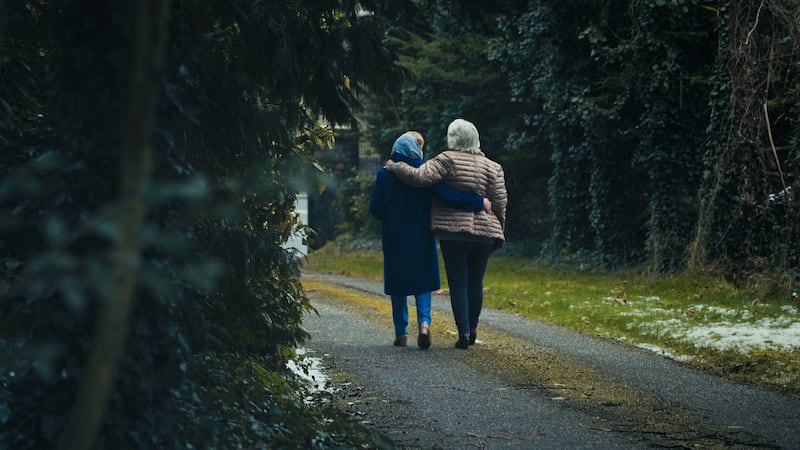Mary first moved to Navan, Co Meath as a trainee doctor in the early 1960s. There she fell in love with Dr Patrick (Paddy) Randles. They bought a house by the river Boyne in town and had the first of their five children.
Navan may have seemed a small town to me when I grew up there in the 1980s and 1990s, but it was even smaller when Mary first arrived.
“Everyone was related to everybody,” Mary told me when I first began asking her about that time. “You couldn’t step on one person’s toes without antagonising so many people.”
One friend was a priest, Fr Andrew Farrell. He had recently moved to the town too after a stint in the United States, and was young and charismatic. The three would have regular get-togethers in the Randles home until, as Mary put it, the “problems” with the schools emerged.
‘Lots of guests got tattooed’: Jack Reynor and best man Sam Keeley on his wedding, making speeches and remaining friends
Forêt restaurant review: A masterclass in French classic cooking in Dublin 4
I went to the cinema to see Small Things Like These. By the time I emerged I had concluded the film was crap
Children and their parents had been presenting injuries in Paddy’s clinic which he couldn’t initially understand. Eventually Norman Murray arrived.

Nine-year-old Norman had broken his arm in an accident falling off a tree. His mother wanted Paddy write a note asking Norman’s teacher, a priest, to beat him on his good arm instead of the injured one. Norman had started writing with his left hand after the tree accident, and this had enraged his teacher who attacked him with a rubber hose. Left-handedness then was associated with the devil, by some.
“He was frothing of the mouth this day when he was beating me,” Norman recalled. “I remember distinctly. And he missed my hand and he busted my eye open, my eye is pumping blood. Then my mam seen the state of me, got me down to the doctor.”
Perhaps other doctors might have written the letter but Paddy was different. He had practised in England after qualifying, a decision he had regretted at first according to Mary.
“He didn’t like these English children at all. He thought they were very precocious,” Mary said.
“They were coming in and speaking for themselves. And that was very strange to him. After some time then, he said it dawned on him that these were normal children explaining their complaints to the doctor and that what he was used to was the abnormal one. So, that changed him. That was the turning point in his life.”
Paddy wasn’t going to ask the priest to beat Norman on his other hand. Instead, he went to the headmaster to let him know that that one of his teachers was beating a little boy on his broken arm with a rubber hose. Unabashed, the headmaster threw a piece of leather across the table at Paddy and said: “That’s what I use.”
It had been made with metal inserts for added impact. Paddy vowed to himself that the headmaster wouldn’t be using it much longer.
The young doctor began to write letters to the local and national press highlighting the prevalence of corporal punishment in the town. For the most part, these were ignored. Schools were almost entirely run by the Church and so criticism of the education system was an attack on the Church. The visits from their friend Fr Farrell abruptly stopped.

Paddy, Mary and committed supporters from around the country such as Dr Cyril Daly, decided to contact the News of the World in London, then a new publication known, as Mary described sweetly, to appreciate “sensation”.
A two-part series came out called Children Under the Lash which interviewed children in Navan and the surrounding area about corporal punishment in local schools.
The first instalment did not go down well. Windows of the Randles practice were smashed and their car tyres slashed. Anonymous calls came at all hours, calling them communists and telling them to get out of Navan. Half the Randles patients left, though all the poorer patients stayed, according to Mary.

Listen: Kathy Sheridan interviews Pray for Our Sinners director Sinéad O’Shea and Dr Mary Randles
The pressure was worse still for nine-year-old Norman and his mother Florence. Both were ostracised. Norman became detached and anxious, gleefully his classmates called him “19th Nervous Breakdown” after the Rolling Stones song.
In the days before the publication of the second part of the story, Norman and his mother were summoned to the parochial house. There, the bishop told them to contact the paper and retract their statements to stop the story’s publication, Norman said.
But in Norman’s words, Florence Murray told them “to publish and be damned”.
I cried myself to sleep most nights... they wanted to do something in the end to hurt you
— 'Betty'
That Sunday morning, the Randles went to the newsagent to pick up the paper. To their surprise, it wasn’t there. They checked all the shops in town. There was no News of the World or indeed any other English newspapers.
The story got about that the newspaper delivery van had been hijacked by a couple of priests on the Dublin Road. They had seized the English newspapers and thrown them into the river Boyne. Now nobody could read the second instalment.
Fr Farrell’s role in the heist remains unclear but, according to Mary, “there was nothing in the town that he wasn’t supervising”.
Somehow the story escalated again. NBC in the US got wind of Ireland’s corporal punishment problem and sent a camera crew to the Randles home.
A news report followed which featured various priests and Department of Education representatives who all denied any issue with corporal punishment. These were countered by a montage of young children in the Randles’ sittingroom. Each confirmed they had witnessed and suffered daily beatings.
Norman stepped up again as did his mother who testified that her neighbours had stopped talking to her because they were “mad at me for showing up brutality which they should have shown up”.
The piece remains an incomparable document of the times but was never broadcast in Ireland. The campaign against corporal punishment continued and eventually, in 1984, the practice was banned.
For Norman, this was too late. In 1970, still aged nine, he was told to leave school and he began to work in a furniture factory. There he was overwhelmed by its size and dangers. One day he witnessed a colleague lose their fingers. He moved from job to job until he left the country in his teens.

Later in life he returned to Navan and I met his teenage daughter Megan, who discussed his trauma with an insight that that marked a profound generational shift.
There had been no choice but to send Megan to a religious run school also. Despite all the scandal, more than 90 per cent of primary and secondary schools in Ireland continue to be under Catholic Church patronage.
Access to multi-denominational education had been another ambition of the Randle’s resistance – a term which made Mary laugh.
“We didn’t regard it as a campaign really,” Mary said. “Which looking back now it was. Several campaigns rolled into one.”
Mary had a strong tendency to laugh when discussing serious things. Some find it disquieting but I always understood; I sometimes did it myself. The only way she had been able to advance her cause for decades had been to play it down. Women especially could not be direct.
When you’re in labour, you just want to scream and that’s all you know, naturally. And then if you’re told, ‘I’ll give you a slap if you don’t stop’, it’s not easy
— 'Betty'
There was also a more philosophical reason behind it too; a sense that one’s own concerns couldn’t be taken too seriously. They were small in the greater scheme.
This was literally gospel in the Catholic community in which we both lived. It was not always a bad thing, but it was the vulnerable who were more often disempowered as a result. The circumstances which gave rise to the Kerry Babies and Ann Lovett cases were common everywhere.
One of Mary’s main focuses until the 1990s was on family planning. Abortion was illegal and contraception mostly banned unless, conversely, it was being used for reasons other than the prevention of pregnancy such as the regulation of periods. Chemists rarely dispensed it anyway.
Enormous families resulted everywhere. These continued right through my childhood too. One boy in my class had 14 brothers and sisters. Not all these families were in strife but the physical and emotional pressure on women was immense.
“It was always the woman,” as Mary once said to me, “she was the one, she was the sinner.”
I was particularly struck by the case of “Betty”. She was “18 or 19″, she told me, when she fell pregnant. She sought guidance from Fr Farrell. Within days he had driven her three hours away, to the Sean Ross Mother and Baby Home in Tipperary.
The horrors she endured have been partially depicted in fictional films such as Philomena but there are few factual records of what the women experienced. The Mother and Baby Homes report of 2021 provided insight into the numbers; it revealed that 9,000 babies and small children had died but didn’t include some testimonies from the women themselves. This caused huge upset among survivors.
Betty was soft-spoken and hesitant when we met. She told me how she and other heavily pregnant women were sometimes woken in the middle of the night and forced to scrub stone floors. Their post would be opened and read. They were given false names so they would be unable to contact each other when they left the home. The nuns continually berated them for their ‘sins’.
Nobody was allowed to breastfeed in case they became too close to the babies, a stricture Betty didn’t understand at the time. She was mystified too by the influx of cars in the driveway of Sunday, although none of them seemed to be visiting any of the girls.
“It wasn’t easy; that is your penance,” Betty said. “I cried myself to sleep most nights... they wanted to do something in the end to hurt you.”
Mary had been Betty’s doctor in Navan. Both she and Paddy were so aware of the horrors of the mother and baby home system that they sometimes hid pregnant girls in their own home, but Betty had already been “spirited away” by Fr Farrell. They arranged instead to visit her on their rare days off and would take her out for a meal in the nearest town, Roscrea. She was obviously unhappy, but they hoped the baby might comfort her.
The birth was difficult. It took some time for Betty to try to describe it to me. As was customary, there was no pain relief. She was threatened with violence if she complained. Women like her deserved pain and punishment, the nuns shouted at her throughout the labour, she said.
“When you’re in labour, you just want to scream and that’s all you know, naturally,” Betty said. “And then if you’re told, ‘I’ll give you a slap if you don’t stop’, it’s not easy.”
“It’s not easy”; “It wasn’t nice”: these were Betty’s most common descriptions of her torment at the mother and baby home. She was unable to express much pain or anger and couldn’t condemn any of those who had hurt her.

One of the most heart breaking moments of my entire research over the years was Betty’s timid insistence that she “wasn’t the only one” to become pregnant outside marriage. Decades later she still felt she had to account for the nun’s description of her.
When the baby was a few days old, Betty was told to go to the local hairdresser. When she returned, Betty was informed that she would board a train for Dublin where she would meet a woman who would take the baby for adoption.
Betty was aghast. The baby, she felt, was a “gift” after all she had endured.
Then a real miracle happened. The Randles had an unexpected day off and decided to visit Betty. The nuns redirected them to the hairdressers where she sat sobbing for her soon to be lost baby.
They brought her back to Sean Ross and confronted the home’s most senior nun, Sr Hildegarde, who said it was “all arranged”. Paddy Randles told her to “unarrange it”.
A stand off took place and Sr Hildegarde capitulated. The nuns were instructed to bring the baby to them. Betty and her baby drove away with the Randles.
In total it is estimated that there were up to 20,000 forced adoptions in Ireland during this period. There are some particularly large question marks over what happened in Sean Ross Abbey, run by the Sacred Heart Order.

The nuns say that 269 babies died there during their years of operation. The Mother and Baby Home report stated that a total of 1,090 had died. The remains of the 821 other babies have never been located. It could be that they are buried somewhere on the grounds or perhaps they too had been illegally adopted. The issue remains unresolved, like so many other examples of Church/State dysfunction.
Betty was lucky. She kept her child, she married and had more children. Unsurprisingly the trauma marks her still. This home-grown resistance could never be a Hollywood style triumph.
Yet there is a truthfulness to the stories of these people that resonates.
Fr Farrell too would prove to be a more nuanced character than we had anticipated, and I needed to better understand my place within this story too.
More unexpected turns awaited me.
Pray For Our Sinners is in cinemas now









